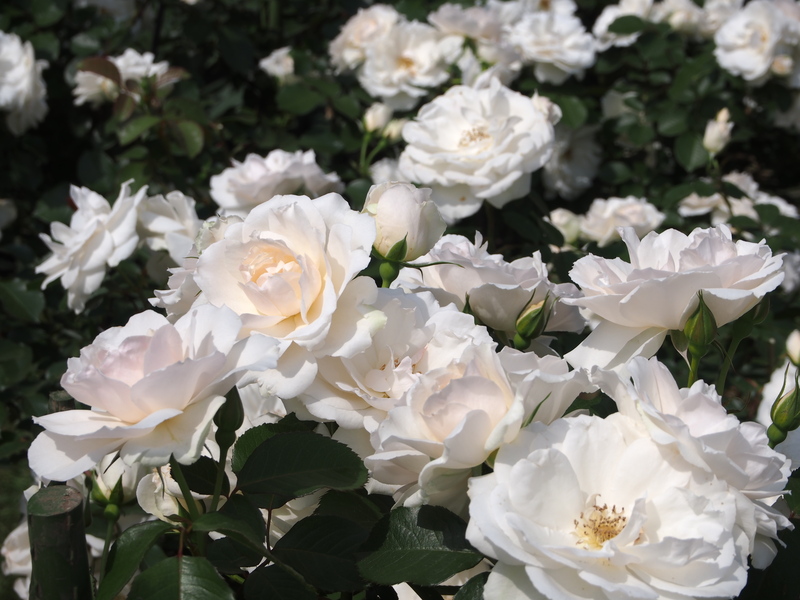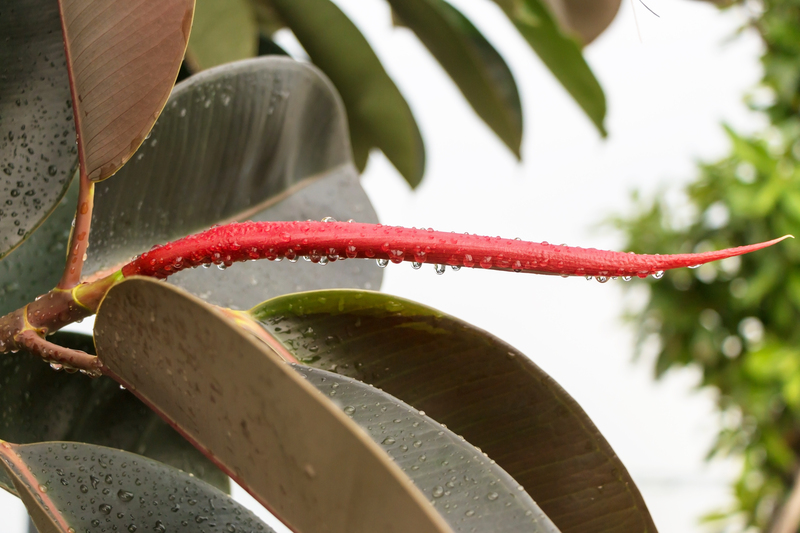Effective Weed Management: 3 Must-Try Strategies
Posted on 27/05/2025
Effective Weed Management: 3 Must-Try Strategies
Weeds present a persistent challenge for gardeners, landscapers, and farmers alike. Competing with desirable plants for nutrients, water, and light, these unwelcome invaders can quickly take over flower beds, vegetable patches, and crop fields, reducing yield and beauty. One cannot overstate the importance of effective weed management: it's the key to unlocking a healthy, abundant, and thriving garden or landscape. In this comprehensive guide, we'll dive into the three essential weed management strategies that every grower should consider and implement.
Why Is Weed Management So Important?
Weeds, such as dandelions, crabgrass, chickweed, and thistle, may seem harmless at first glance. But left unchecked, they can:
- Outcompete crops and ornamental plants for vital resources.
- Harbor pests and diseases that can threaten healthy plants.
- Reduce soil quality and disrupt intended landscape designs.
- Raise maintenance costs and labor requirements.

Understanding the Basics of Weed Management
Weed seeds are everywhere - drifting on the wind, carried by animals and humans, or lying dormant in the soil. To manage weeds effectively, you must comprehend their life cycles, survival strategies, and optimal control methods.
- Annual weeds: Complete their life cycle in a single year. Examples include chickweed and crabgrass.
- Biennial weeds: Take two years to mature, like wild carrot and burdock.
- Perennial weeds: Live for multiple years, regrowing from roots, such as dandelion and bindweed.
Armed with this knowledge, you can implement a more effective weed management plan tailored to your unique environment.
3 Must-Try Strategies for Effective Weed Management
Ready to take control of your garden or fields? Here are the three most powerful weed control methods that experts recommend for modern, sustainable, and consistent results.
1. Cultural Weed Control: Prevention Is Better Than Cure
The most sustainable approach to weed management is to prevent weeds from gaining a foothold in the first place. Cultural weed control refers to gardening and farming practices that discourage weed growth while promoting the health of wanted plants.
How to Use Cultural Methods for Weed Suppression
- Crop Rotation: Regularly switching crops disrupts weed life cycles and reduces the buildup of specific weed species.
- Dense Planting and Ground Covers: Encourages desirable plants to shade soil, outcompeting weeds for sunlight and reducing the area for weed seed germination.
- Use of Mulch: Applying organic materials (like straw, bark, compost) or synthetic weed barriers (landscape fabric) blocks light and limits weed emergence.
- Soil Health Management: Strong soil supports vigorous plants that stand up to weed competition. Incorporate organic matter and maintain proper nutrient levels.
- Proper Mowing and Pruning: Regularly mow lawns and prune gardens to prevent weeds from flowering and setting seed.
Key Takeaway: The best weed management strategy is not fighting weeds after they appear - it's making your growing space less inviting to them from the start.
2. Mechanical and Physical Weed Control: Take Action with Tools
Sometimes, manual action is required to keep weeds at bay. Mechanical weed management involves using hand tools, power equipment, or even livestock to physically remove and contain weed populations.
Popular Mechanical Weed Control Techniques
- Hand Weeding: Ideal for small garden beds and around delicate plants. Remove the entire root system to prevent regrowth.
- Hoeing and Cultivation: Disrupts weed seedlings in vegetable gardens and rows, best performed when weeds are small.
- Tillage: Turning over soil before planting can bury weed seeds or unearth them for removal.
- Mowing and Weed Whacking: Keeps larger weeds from going to seed, reducing future pressure.
- Flame Weeding: Controlled application of heat (with proper safety precautions) destroys above-ground weed tissues, especially effective for annuals.
- Livestock Grazing: Animals like goats and sheep can target and reduce weed populations in pastures and orchards.
Best Practices:
- Remove weeds before they flower or go to seed to limit reproduction.
- Check root systems; perennials require complete root removal for long-term control.
- Time cultivation and mowing to the weed's growth stage for maximum impact.
Physical weed management is labor-intensive but highly targeted and chemical-free. Integrating these tactics keeps weed populations in check while preserving environmental health.
3. Chemical Weed Control: Using Herbicides Responsibly
In some situations, especially on large properties or with persistent perennial weeds, herbicides can be an important part of an integrated weed management plan. However, it's crucial to use chemical controls with precision, safety, and environmental consciousness.
Types of Herbicides for Weed Management
- Pre-emergent Herbicides: Stop weed seeds from germinating. Ideal for lawns, flower beds, and crop fields before weeds appear.
- Post-emergent Herbicides: Target actively growing weeds without harming established crops (when used as labeled).
- Selective Herbicides: Formulated to affect only certain types of plants (i.e., broadleaf weeds in lawns without harming grass).
- Non-selective Herbicides: Kills all vegetation and is typically used for total area clearance or spot treatment.
Safe and Effective Use of Herbicides
- Always read and follow the product label for application rates, timing, and safety precautions.
- Spot-treat individual weeds instead of blanket-spraying to reduce chemical usage and environmental impact.
- Wear protective clothing and avoid spraying on windy days to prevent drift onto desired plants.
- Consider organic or natural-based herbicides for environmentally sensitive areas.
Pro Tip: Herbicides are most effective when integrated with cultural and mechanical methods, forming a balanced, multi-prong approach to weed suppression.
Integrated Weed Management: The Ultimate Solution
No single approach guarantees total weed control. The most successful gardeners and farmers employ Integrated Weed Management (IWM), combining the three core strategies highlighted above for robust, long-term results.
- Start with strong prevention by optimizing soil health, crop rotation, and mulching.
- Regularly scout your property and address emerging weeds with hand-weeding or cultivation.
- Reserve herbicide use for tough situations where other methods fall short--always with care!
This blended solution reduces weed pressure, cuts costs, preserves biodiversity, and minimizes environmental impact.
Additional Tips for Successful Weed Management
- Know your enemy: Identify the most common weed species in your area for tailored management approaches.
- Monitor regularly: Early intervention is easier and more effective than battling mature weeds.
- Avoid soil disturbance: Excessive tilling can bring buried weed seeds to the surface; minimize soil disruption if possible.
- Practice good sanitation: Clean tools and equipment to prevent spreading weed seeds between beds and fields.
- Utilize cover crops: Off-season plantings of rye, clover, or vetch add soil nutrients and crowd out winter/spring weed emergence.
Common Mistakes to Avoid in Weed Management
- Letting weeds go to seed: A single plant can produce thousands of seeds, guaranteeing future problems if not removed in time.
- Over-reliance on herbicides: Repeated chemical use can lead to herbicide resistance and damage to beneficial soil life.
- Neglecting to replenish mulch: Worn-thin mulch loses its weed-suppressing effectiveness--top off as needed.
- Improper irrigation: Watering paths and open spaces encourages weed growth; target water directly to desired plants.
Conclusion: Take Control With These Must-Try Weed Management Strategies
Effective weed management isn't about completely eradicating every unwanted plant--it's about maintaining a balance that keeps weeds from overtaking your space, while supporting the well-being of your chosen crops or ornamentals. By adopting a combination of prevention, physical control, and responsible chemical intervention, you'll be well on your way to a lush, low-maintenance, and productive garden.
Remember: The journey to weed-free success is ongoing. Practicing the three must-try strategies of Integrated Weed Control ensures lasting results and a happier relationship with your garden or landscape.

Frequently Asked Questions About Weed Management
1. What is the most effective method for weed management?
The most effective weed management combines several strategies, including prevention (cultural control), regular hand-weeding or mechanical removal, and targeted chemical treatments when necessary.
2. How does mulch help with weed control?
Mulch forms a physical barrier, blocking sunlight from reaching weed seeds and maintaining soil moisture. Organic mulches also enhance soil health as they decompose, further promoting vigorous plant growth.
3. Are natural weed killers effective?
Natural or organic herbicides (like vinegar-based sprays) can be effective for small, tender weeds but may not provide long-term or systemic control of stubborn perennials. Always integrate them with other methods for best results.
4. When should I use herbicides?
Use herbicides primarily as a targeted measure for persistent weeds or large infestations. Always follow label instructions and combine with other weed management practices for sustainable control.
Start Managing Weeds Like a Pro!
Implement these proven, must-try strategies for effective weed management in your garden, lawn, or field today. By staying proactive, vigilant, and informed, you'll transform your green spaces into flourishing, weed-resistant landscapes year after year!

